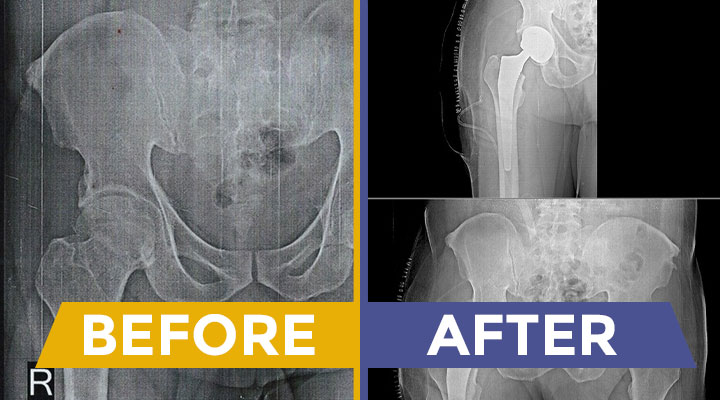Hip Replacement Surgery
During hip replacement, the damaged parts of the hip joint are replaced with prosthesis made of ceramic, plastic or metal material. These prostheses further help reinstate the normal function of the hip without exerting pain or discomfort. Also known as total hip arthroplasty, this type of surgery tackles the risks of hip pain that is relayed due to chronic conditions like arthritis or other conditions.
Why Hip Replacement?
Undergoing a hip replacement surgery is done to correct chronic conditions that are interfering with the normal activities in life. Some of those conditions are:
Put in simple terms, hip replacement surgery might become a treatment option if:
- You are having a hard time walking and need a cane or walker
- You are not able to get peaceful sleep at night
- You are having difficulty getting dressed
- You are feeling a sharp pain while standing up after being sat for long
- You are having a hard time going up and down the stairs
- You are suffering from Osteoarthritis, Rheumatoid arthritis, and Osteonecrosis
- You are experiencing persistent pain even after taking analgesics
While hip replacements are commonly performed in patients aged over 60 years, teens and youngsters suffering from juvenile arthritis, or AVASCULAR NECROSIS of femoral head leading to hip arthritis. May also become candidates for the surgery.

Types of Hip Replacement Surgeries
There are primarily three categories of hip replacement surgeries.
Total Hip Replacement Surgery
In a total hip replacement, the damaged bone along with the cartilage is replaced with prosthetic components. The selection of anaesthesia is based on preference of patient, surgeon, and anaesthesiologist. Spinal blocks, epidural blocks and peripheral nerve blocks are the most frequently considered options. At Vidyasagar Hospital, to speed up patient recovery and reduce the risk of possible side effects, we implement fast-track anesthesia technique.
In keeping with our commitment to provide the best outcomes and experience to our patients, we have equipped out hospital with state-of-the-art laminar airflow operation theatres. Any risk of infections of operation wounds is mitigated, thanks to the continuous flow of highly filtered ultraclean air in these OTs.
Further, a multi-disciplinary team of doctors and surgeons, including an orthopedic surgeon, an anaesthesiologist, a diabetologist, a cardiologist, and a physical therapist work together so that there is scope left for errors and to deliver high-quality care.
During the procedure, the surgeon accesses the damaged or diseased bone or hip joint and removes the same. The healthy bone in the surrounding region is left intact. After the removal of the damaged hip joint, a prosthetic socket is implanted into the pelvic bone to replace the damaged socket. The round ball on the top of the femur is then replaced with the prosthesis to strengthen the structure and ensure successful completion of the surgery. Once the prosthesis is placed in, the incision is sutured back.
Revision Hip Replacement Surgery
A revision hip replacement surgery is required when a hip replacement fails. Much like your natural bones, even the prosthetic hip joint from the primary hip replacement wears out after some years and is prone to accidents. If the implants wear and loosen, or there is an infection at the surgical site or a trauma leads to dislocation of the joint, the orthopaedic surgeon will have to fix it by performing another surgery.
The procedure of a revision hip replacement surgery is more or less similar to the original hip replacement surgery. However, compared to a hip replacement surgery, a revision hip replacement surgery requires more planning and careful execution. The surgeon will remove some or all parts of the original prosthesis and replaces them with the new ones.


